The Ecomodernist Manifesto from 2015 is summed up in one sentence: Ecomodernism is “decoupling from nature consumption” instead of “dependence on nature”.
Critics say that ecomodernism thus stands for an alienation of humans from nature – because it pursues the extreme goal of settling the world’s population only in large cities and leaving nature to its own devices.
But what is really meant by this?
The land use on earth is currently divided as follows:[1]Land Use, by Hannah Ritchie and Max Roser, September 2019.
https://ourworldindata.org/land-use
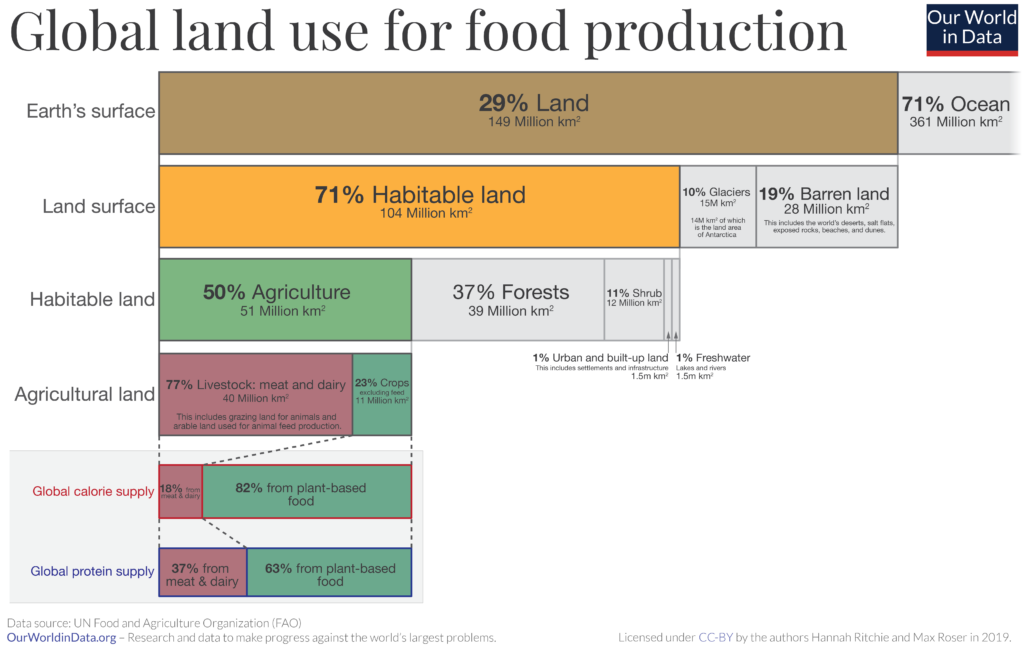
As we can see, the settlement of the earth with 7.89 billion people[2]Statistics on the world population, published by Bruno Urmersbach, 25.08.2021.
https://de.statista.com/themen/75/weltbevoelkerung/ with cities and villages makes only 1% of the land area. Land is mainly occupied by agriculture and forest. A problem for nature is the competition of agricultural land with forest, which serves us as CO₂ storage. Sustainably left forest that is not regularly cut down and used as fuel serves us as a permanent CO₂ sink as well. Of course, forests can never offset immense fossil CO₂ emissions, but they can prevent soil erosion, store water, and cool the soil, which can at least influence microclimate and precipitation patterns over land.
Agriculture versus biodiversity and forests: the real battle for nature
Within agricultural land (fourth bar from the top), however, we already see the real problem: food from animal products occupies three-quarters of the total agricultural land for pasture and fodder for 18 percent energy yield from food, while direct crops cover 82 percent of the energy yield from food with only a quarter of the land. So vegans are not at all wrong when they say they are protecting nature.
In a 2013 study by the German Federal Environment Agency[3]Using global land area and biomass sustainably and resource-efficiently, 2013, p. 9
https://www.umweltbundesamt.de/en/publikationen/globale-landflaechen-biomasse, the globally available agricultural land is further broken down by area. Here, the fourth bar from the “Our World in Data” chart above should be compared with the second bar from the UBA chart:
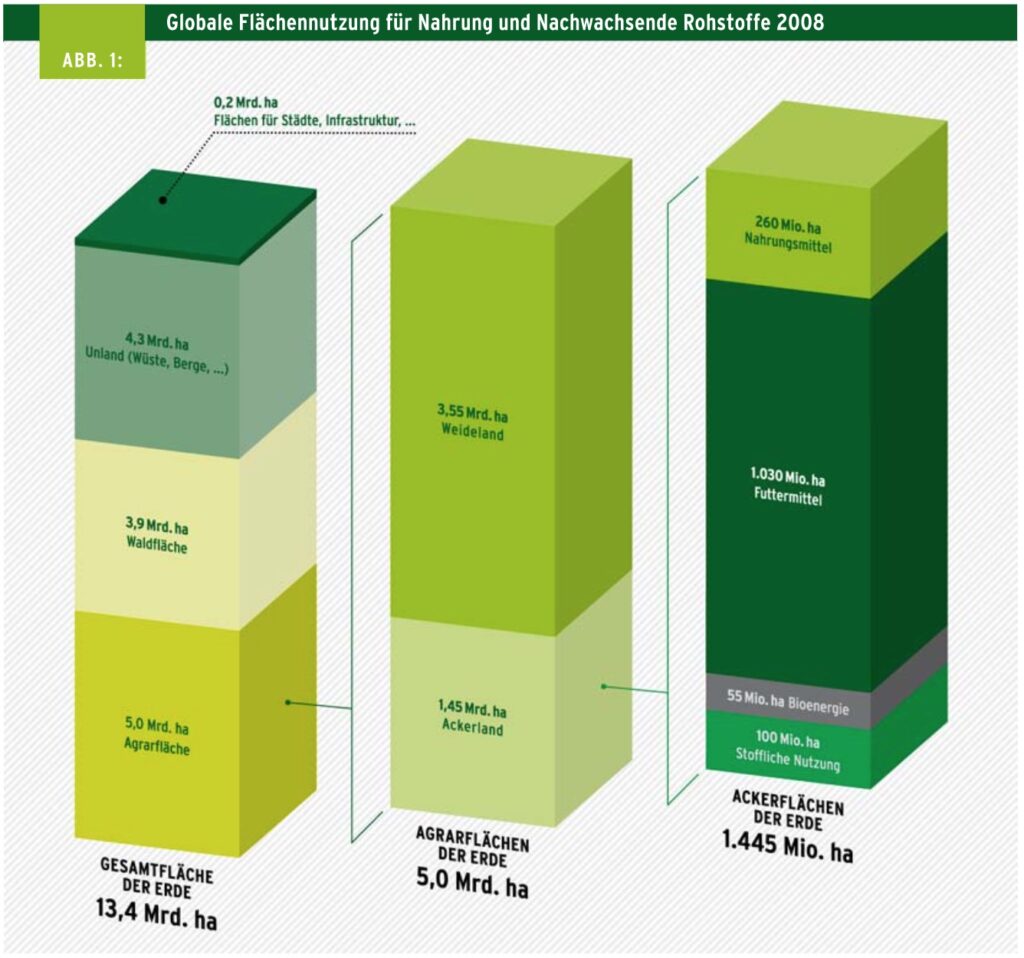
Again, it is clear that the production of forage competes directly with human food production, even if the pasture land cannot be used directly as cropland. Less animal husbandry on the same pasture area would take up less land for feed production.
Biodiversity as an approach to nature conservation as a whole calls for smaller plots with different plants on them. However, smaller contiguous areas are more cost-intensive to cultivate and are often the domain of smaller farms, whose problem, however, is to be able to cover their costs. The large-scale cultivation of energy crops and plants as feed for livestock works against biodiversity.
If this land is additionally taken up locally for the technical use of renewable energies such as wind power and open-space solar plants, this in turn competes with agricultural use and forests. In this context, soil sealing for access to such facilities is also a point that must not be underestimated.
Ecomodernism does not mean driving people out of rural areas
The task of an eco-modern approach should therefore be to continue to allow people to settle in their current areas, be they urban or rural, be they high-rise buildings or single-family homes in villages.
The far greater leverage is in agricultural use. If we reduce these areas or change their use, it will directly benefit nature and forest areas. We should start with the excessive use of land for livestock, but some crop cultivation can also be brought directly into cities with vertical farming. However, this form of agriculture needs clean and cheap useful energy. Short distances and less use of pesticides would be the advantages.
If man is to detach himself from nature, this does not mean that he should respect it less, but on the contrary: he must emancipate himself from it insofar as he is no longer negatively dependent on it – in order to be able to leave it alone.
The key to eco-modernism therefore lies in the type of useful energy production and in a nature-compatible, biodiverse, integrative land use of agriculture, which, however, also needs affordable and available energy.
Quellen:
| ↑1 | Land Use, by Hannah Ritchie and Max Roser, September 2019. https://ourworldindata.org/land-use |
|---|---|
| ↑2 | Statistics on the world population, published by Bruno Urmersbach, 25.08.2021. https://de.statista.com/themen/75/weltbevoelkerung/ |
| ↑3 | Using global land area and biomass sustainably and resource-efficiently, 2013, p. 9 https://www.umweltbundesamt.de/en/publikationen/globale-landflaechen-biomasse |

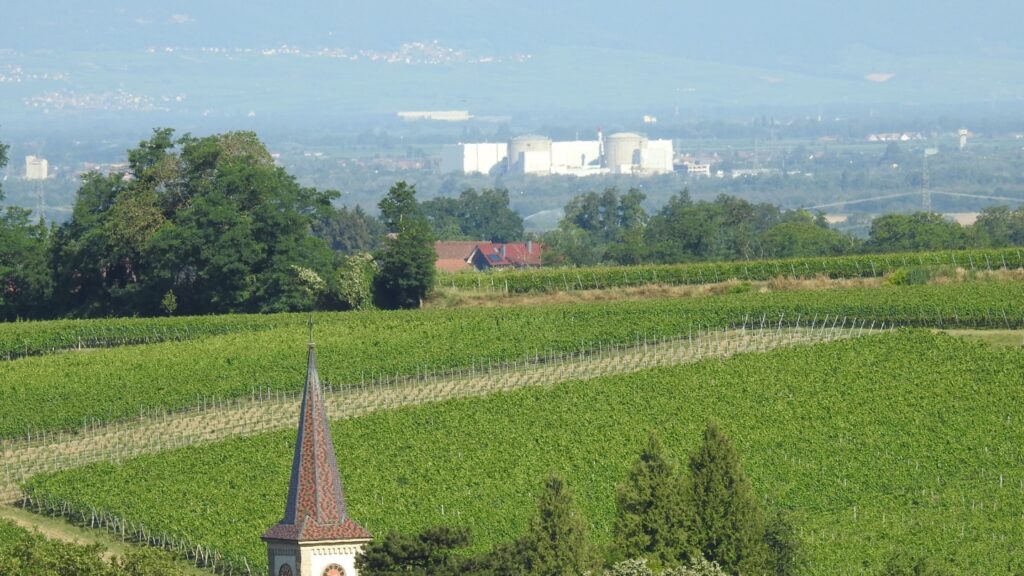
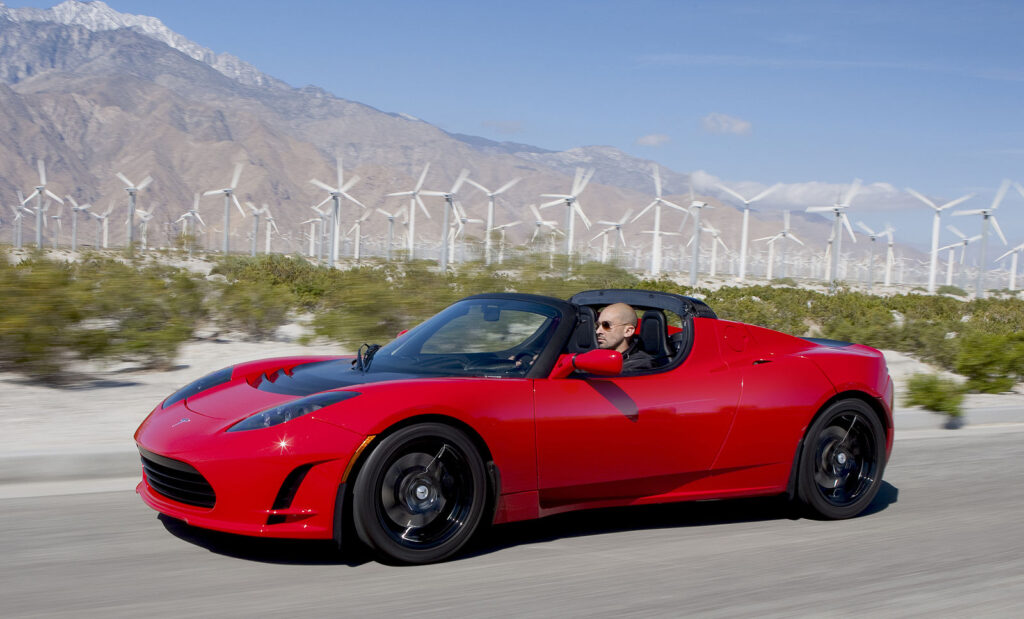
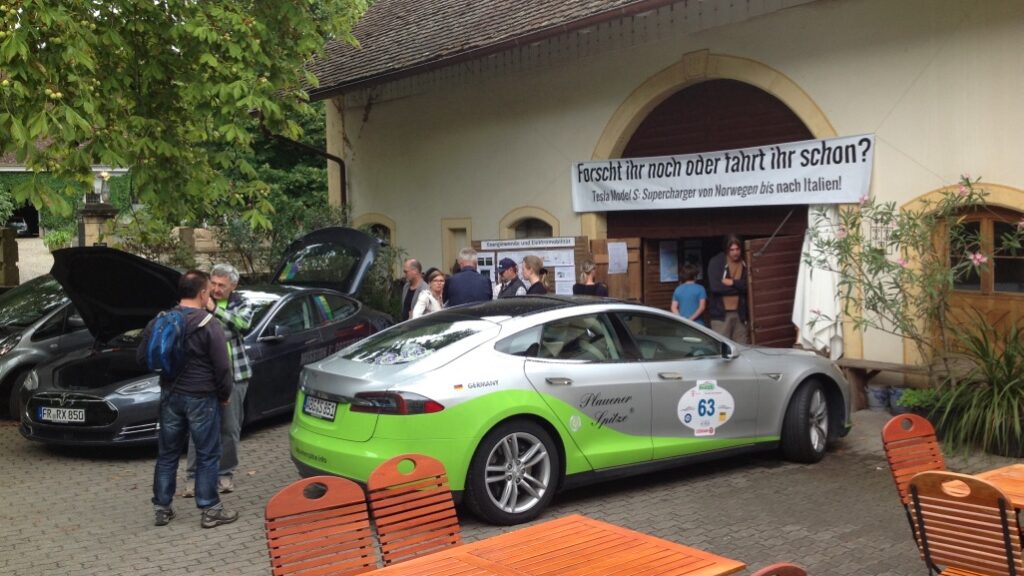

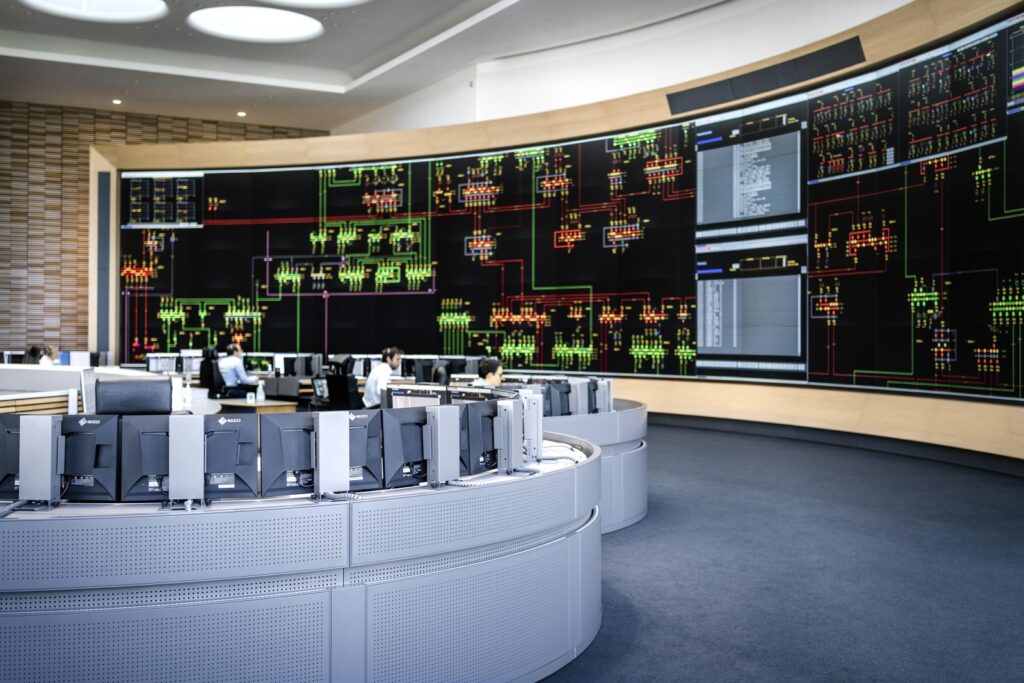
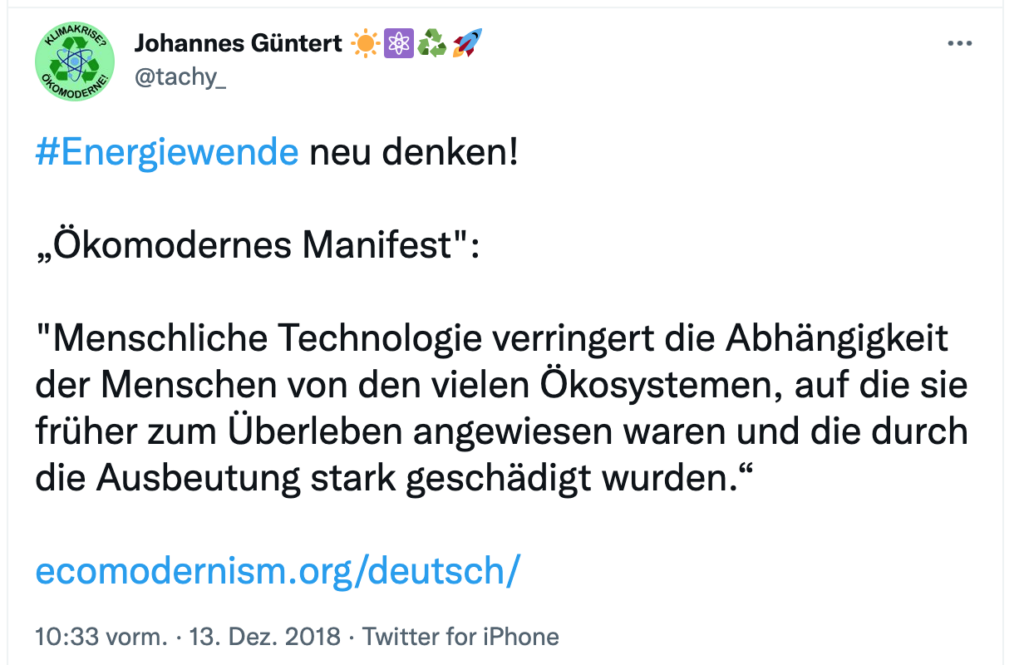
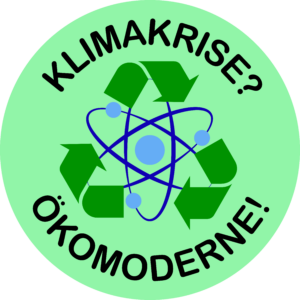 Therefore, I started to question nuclear energy anew as well, to inform myself about the current state of affairs (for example, I shared
Therefore, I started to question nuclear energy anew as well, to inform myself about the current state of affairs (for example, I shared